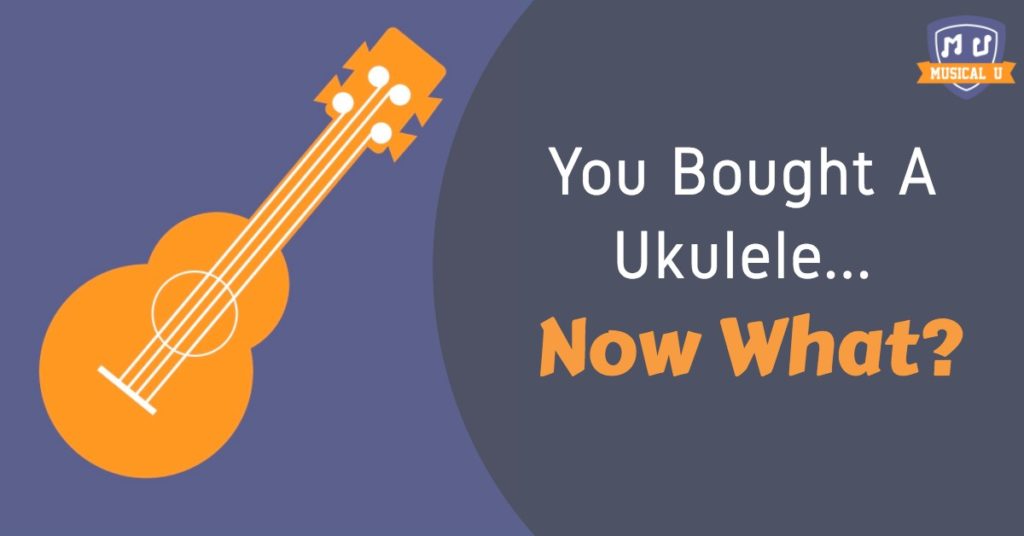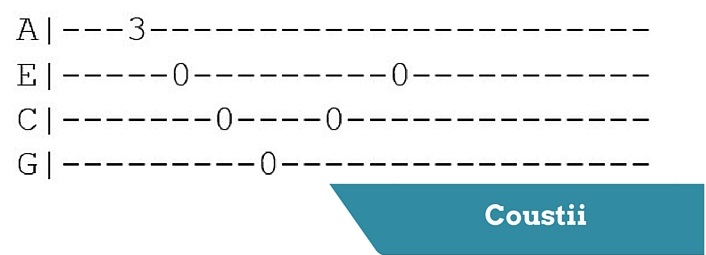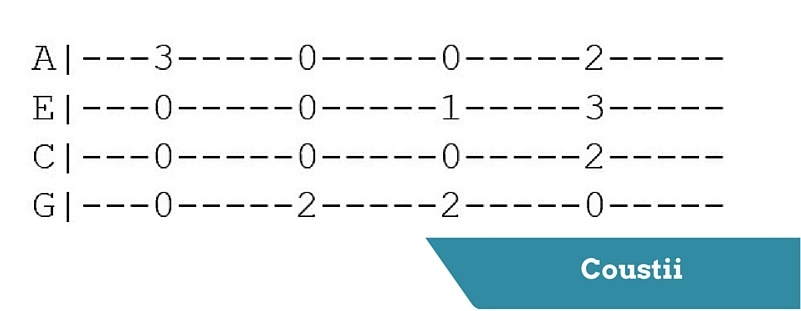Who doesn’t love the ukulele? If you’ve ever brought your instrument to a party, you and your uke were probably the center of attention.
If you’re brand new to learning ukulele, don’t worry, it’s not as difficult as you think! If you want to learn more about playing this fun little instrument, we’ve got everything you need to kick your playing into high gear!
Getting to Know Your New Instrument
You may notice that the ukulele is similar to a guitar, but it’s smaller and has its own distinct sound. The ukulele is composed of three sections: the head, the neck, and the body. The head of the ukulele features only tuning knobs, the neck features frets, fret markers, and a fretboard, and the body features the sound hole, bridge, and saddle. A fret is the strip of metal that goes across your ukulele.
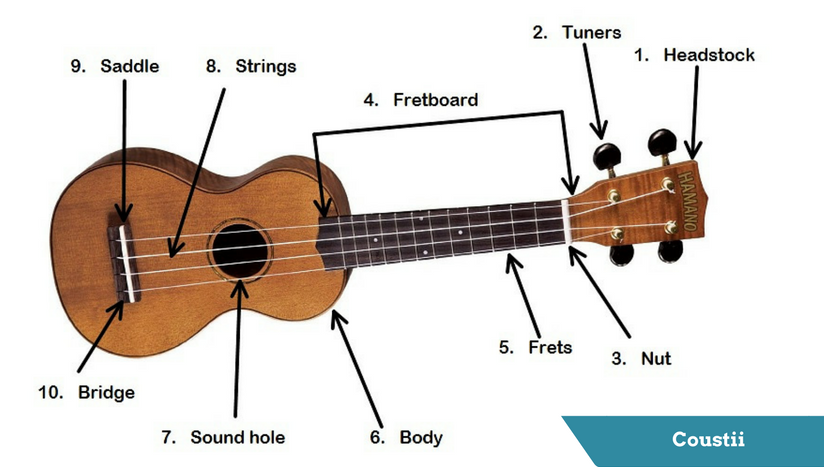
Playing different chords on various frets will allow you to create different sounds. The fretboard is the entire vertical piece on your guitar where the strings are extended and it also features the fret markers, which are small colored circles that help you to remember which fret your fingers are on. Lastly, the bridge and the saddle are where your strings are attached on the bottom of your ukulele.
Getting in Tune
Once you are familiar with the different parts of your ukulele, you need to learn how to tune it! We know that tuning can be a pain and seem like a waste of time, but you’ll quickly realize that if you don’t tune your ukulele, your music will be off-key! Tuning can be achieved with the use of a tuning app on a phone or an electric tuner, but it’s even better if you learn how to tune your ukulele by ear as well.
The first thing to know about tuning is that when you tighten the strings using the tuning knobs, the note will go higher in pitch, and when you loosen them, the note will go lower in pitch. If you’re new to tuning, ask someone else to help you, and remember to be careful when tightening the strings. If you tighten your strings too much you risk ruining them!
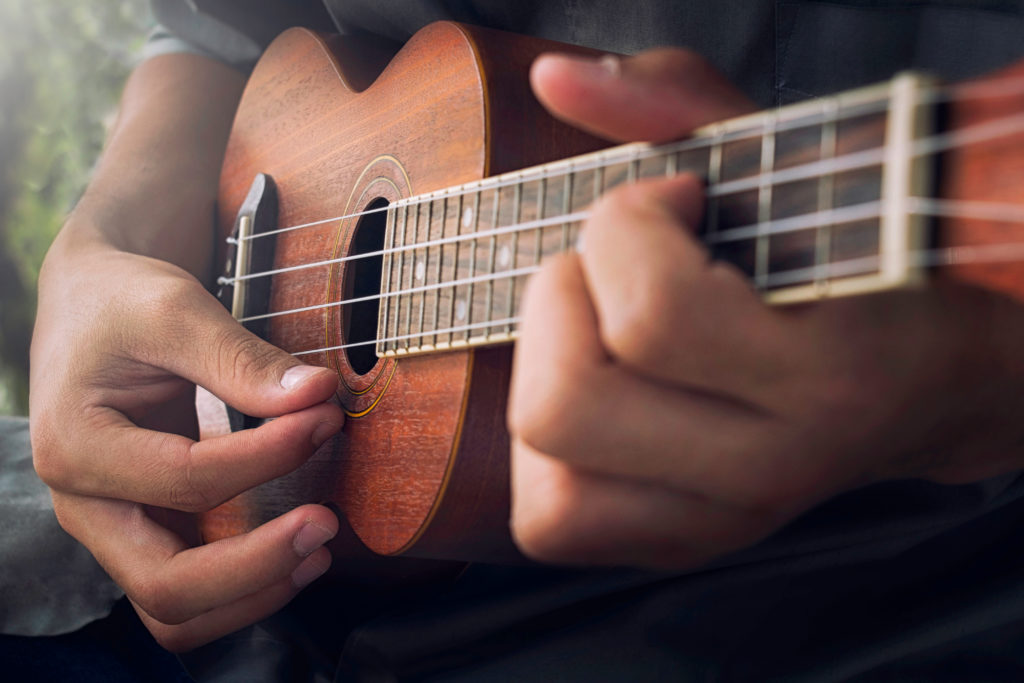 There are several different tunings that you can use. The most common method is G-C-E-A tuning. If you are tuning your ukulele strings to G-C-E-A, you can use the re-entrant or the linear method. Many people choose to tune their ukulele using the linear method, which allows you to open the note range of your uke!
There are several different tunings that you can use. The most common method is G-C-E-A tuning. If you are tuning your ukulele strings to G-C-E-A, you can use the re-entrant or the linear method. Many people choose to tune their ukulele using the linear method, which allows you to open the note range of your uke!
Other tuning methods include slack-key tuning, English tuning, and Canadian tuning. Feel free to research each method and see what works for you. If you have an ear for music, you may find it easy to tune by ear and start with the G chord, re-adjusting each string as you find the correct note.
Holding the Ukulele
Typically, ukulele players strum or pluck strings with their dominant hand and hold it with their non-dominant hand. When you are holding your uke, hold it against your chest and place the body of your uke in the crook of your elbow. You can also make use of a ukulele strap, or rest it in your lap if you are sitting. Don’t forget also to keep your back straight to avoid back and shoulder pain later!
Ukulele Tabs, Chords, and More!
Once you know how to tune your ukulele, or at least have downloaded a phone app, you are ready to learn how to read ukulele chords and tabs.
Chords
A quick refresher: chords are a cluster of notes played together, simultaneously. Ukulele chord diagrams look a little something like this:
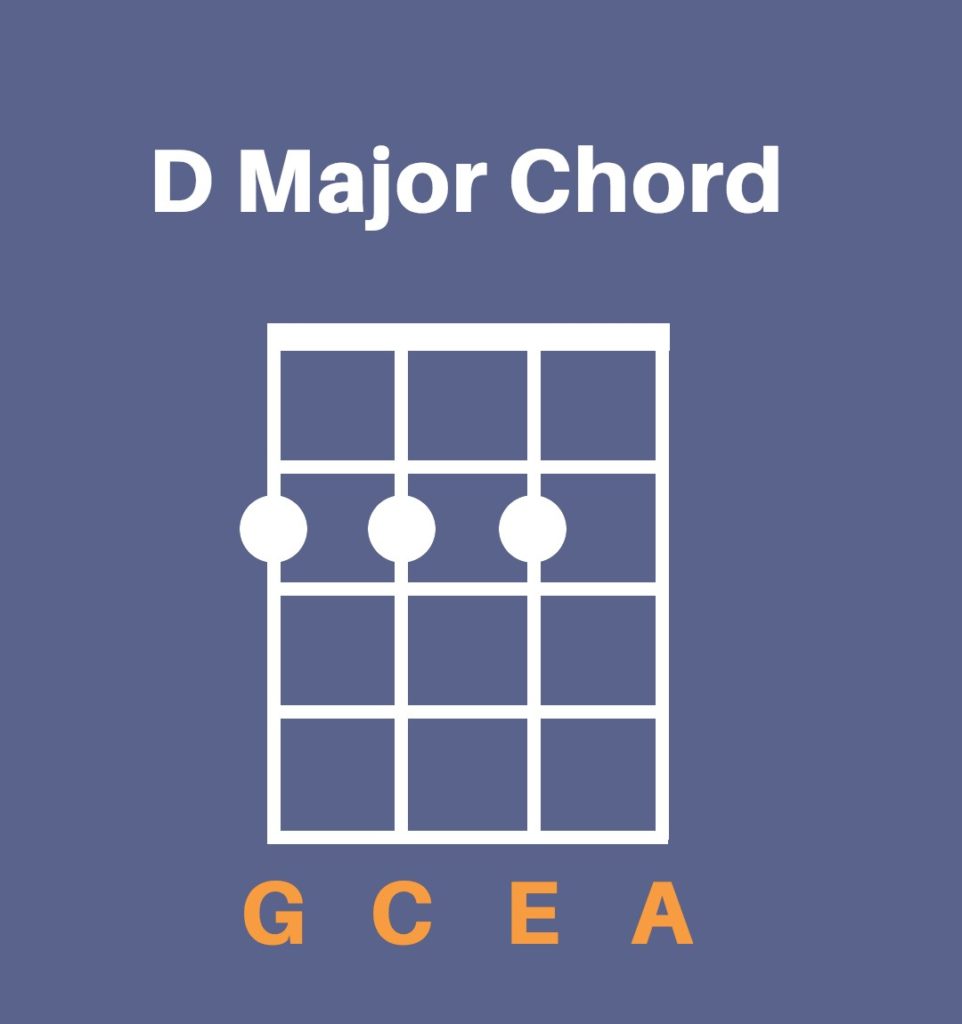
On a ukulele chord diagram, there are four lines. Each line represents a string on the ukulele. The G string will be the string on the left side of the tab, and the A string will be the string on the right side of the tab. You also will see circles on each line that tells you on which fret you need to pluck the string. For example, looking at the above chord, there is a circle on the second fret on the leftmost line. That means that you need to pluck the G string on the second fret.
Tabs
Though chords are the more common way of providing written notation for ukulele music, you may come across tabs, too!
Tabs (short for tablature) are simply a way of telling you which strings to play in what order, as well as which frets to play on each string. Here’s an example:
As you can see, there are four horizontal lines, as opposed to the vertical layout of the chords. In tabs, the bottom line represents the G string, and the top line is the A string. The numbers on each line tell you the fret of that string that should be played.
If you see a series of numbers stacked vertically, the tab is indicating to play all these notes at the same time. In fact, you may be looking at a chord! Sometimes, tabs even indicate the name of the chord over a tab.
There are also some other symbols you may see when reading a uke tab, such as an “X”, which means to not play the string at all, or an “O”, which means to play the string open. You may also see an “h” (hammer-on), a “/” (represents sliding), or a “P” (pull-off). As you learn more about reading uke tabs, you’ll also learn the different symbols and what they mean.
Get Practicing!
If you think you’re ready to learn some beginner ukulele chords, try the C major chord, which is by far the easiest chord! You only need to place your ring finger on the A string on the third fret, and that’s it:
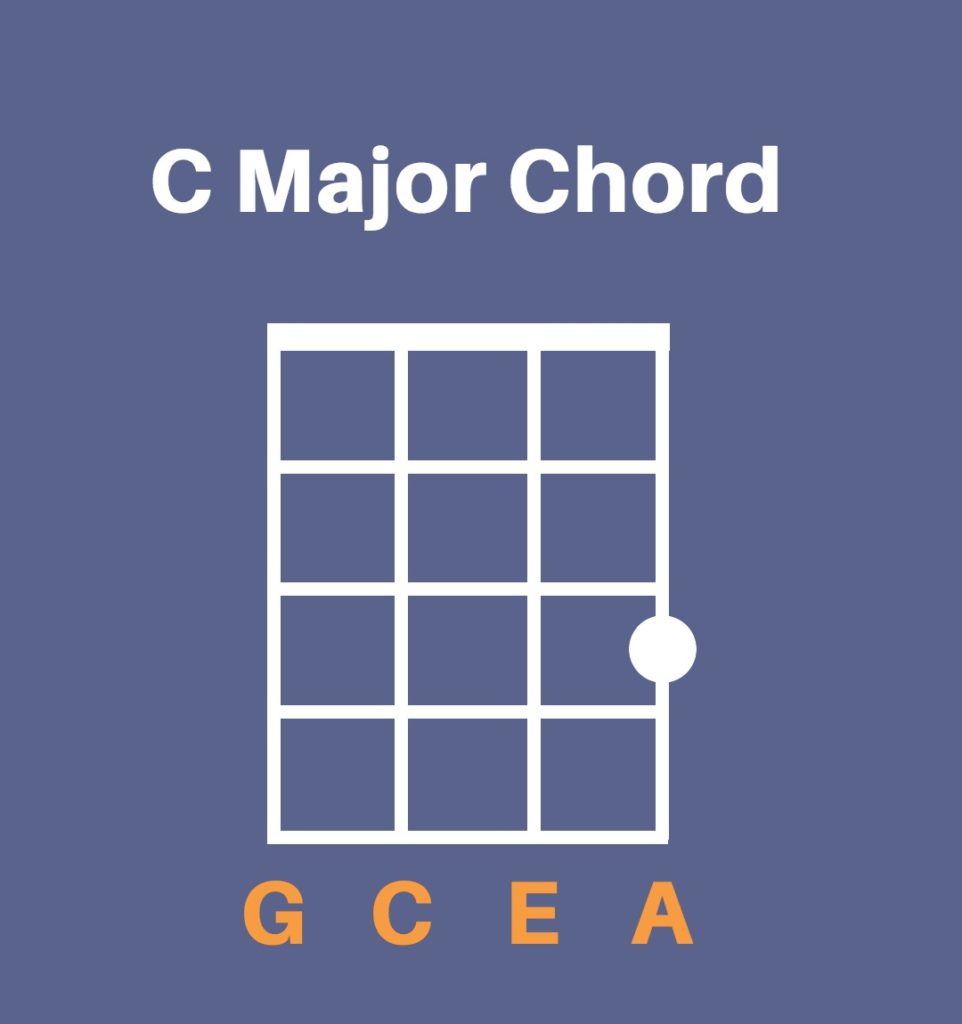
Once you’ve mastered C major, try A major. For A major, you will need one finger on the G string on the second fret, and another finger on the C string on the first fret:
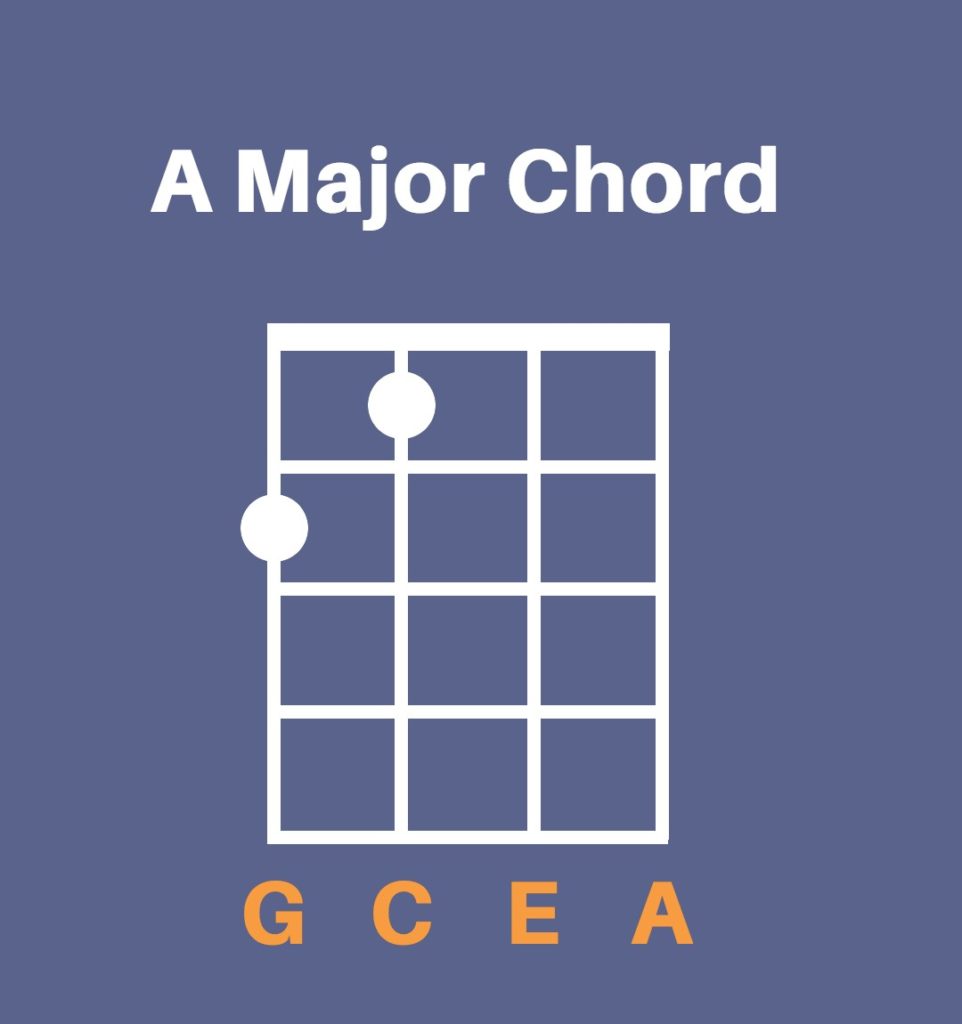
Now, let’s try something a little bit trickier. To play a G chord, you’ll need one finger on the second fret of the C string, one finger on the third fret of the E string, and one finger on the second fret of the A string:
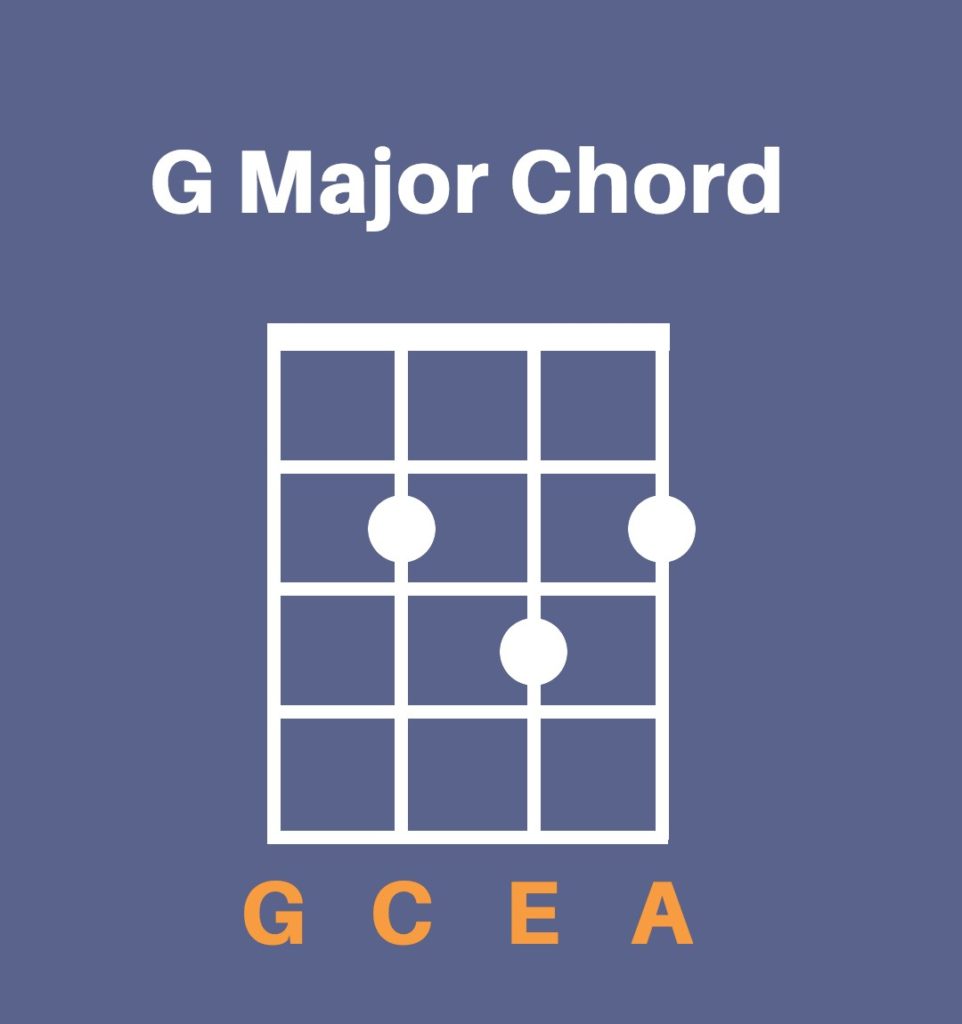
For an extra challenge, try playing the chord progression D-G-A. This is the famous I–IV–V chord progression, which countless popular songs are built on!
Coustii has a ukulele chords for beginners’ guide to get you started. If you’ve just learned how to read ukulele tabs, you can learn new chords by reading uke tabs by yourself!
Putting it All Together
Once you have conquered a few basic chords, it’s time to try some easy songs.
Here are a few songs that everyone will love, and won’t be too difficult for the beginner:
- Stay With Me – Sam Smith
- Sweet Home Alabama – Lynyrd Skynyrd (a classic song for stringed instruments!)
- Margaritaville – Jimmy Buffet (for those who prefer an older sound)
- Whistle – Flo Rida
There are many demos of these songs and others on YouTube so that you can learn quickly by watching others play the song. If you prefer to learn on your own, you can also research ukulele chords or tabs and give it a go on your own!
Another way that you can learn ukulele is by using ear training. Sometimes, people naturally learn to play music by listening and playing the notes that they hear. If it is difficult for you to learn by just using your ears and trying to replicate the notes you hear, you can also use Musical U’s training exercises and resources to be a more natural musician and play by ear.
Stay Motivated: Join A Musical Community!
Whether you are in the beginning stages of learning the ukulele or are just starting to play again, one of the biggest hurdles to overcome while learning any instrument is staying motivated!
It can be very difficult to stay motivated if you feel that you are not making progress and improving. The best way to stay inspired is to keep practicing! Make it easy for yourself by creating a regular routine for practicing. If learning the ukulele is important to you, find time in your hectic schedule for at least 15-20 minutes of practice a day, or create a routine that works for you. See what you can do to keep yourself motivated and learning!
”There is no better way to keep yourself playing than surrounding yourself with other ukulele players. If one uke is good, two or more is better!”
Also, imagine being able to pick up your uke and playing any song you want, just by listening to it a few times. This may be a pipe dream for many musicians, but it’s in fact a very tangible goal! Ear training is a great help in helping you understand chords and find your way around the fretboard, and will help you improve faster with your ukulele.
Musical U will give you both of the above: a supportive community of fellow uke players, and online training and instruction to teach you ear training. By joining, you can benefit by learning how to play by ear, jamming with others, and gaining confidence in your uke skills as well as your ability to improvise! You can even connect with other musicians globally and stay focused on learning. As musicians, it easy to get discouraged, and simply learn chords and songs, but online courses with community support will ensure you master the uke in no time!

